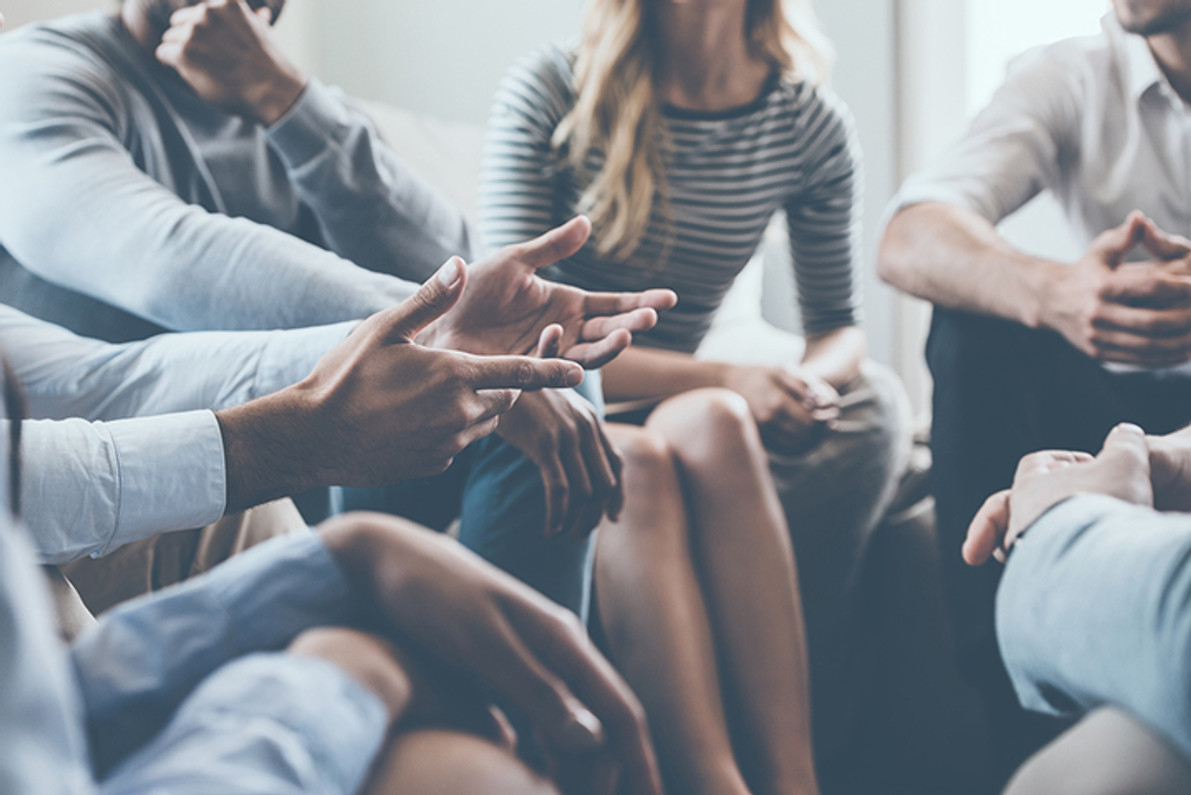My New Friend
For privacy, I’ll call her My New Friend.
We met in a grief-counseling session.
It’s not been a year since I lost my mother. So when I received another letter from the Hospice team that helped me through the-most-overwhelming-year-of-my-life, I decided to show up to the support group they recommended. I thought, if nothing else, I’ll get a story out of it.
“One of the worst times is around six months after your loss,” the counselor said. “That’s when people stop asking how you’re doing and you’re left alone with your grief.”
Oh! Suddenly the only sound I could hear was the strike, strike, strike of a chord. I might have been mistaken, but I thought the last time I saw one of my oldest friends, I thought she avoided the subject of my loss purposely. I had the feeling it made her too uncomfortable.
My friends think I’m over it because I pretend I’m over it. Our conversations on the phone don’t include the subject of grief. They include things like, “Oh, can you believe what’s happening to Queen Anne Avenue? So tragic! So typical!” But neither of us bring up our mothers.
And in one way it feels as if we are trying to deny our own mortality.
In another, it’s a relief to talk about anything else.
But that doesn’t mean grief doesn’t build up until it spills out unexpectedly. For instance, that new ad on TV where iPhones are marketed to toddlers still strapped into their car seats made me cry out, “It’s the end of all innocence!”
Though, in reality, it’s only the end of, sniff-sniff, mine.
I knew there was something seriously wrong when even our ninety degree weather didn’t cheer me up. Generally, sunny warmth lifts the blues right out of me.
I knew it again when I learned of my new book publication and I was, like, yeah, great, whatever. Like a mother about to give birth to her ninth child.
Why? Because my mother would have baked a lasagna and bragged to all her friends, unconcerned about (and kind enough not to ask about) the money this title will or will not make.
And I knew it because nothing about my days felt quite right, there was always a snag.
When it is my turn to “share” with the support group, I decide to tell a story about my mother, how she was never one to mince words. How, when I was excited to take my first dance class (I must have been five or six) she said she signed me up just so she could have forty-five minutes to herself once a week, and how she wasn’t shy about saying that, not to me, not to my teacher, and not to any of the other moms who tried to sit next to her. Right up through Ballet I, when forty-five minutes stretched to an hour, I could see her sitting across the street on the bench in front of the A & P, smoking her cigarette and staring up at the sky as if it saved her from having to decide what to do with the rest of her life.
I told everyone how she smoked all the time. I remembered aloud how she’d said smoking was the way to feel sophisticated in her day, as if smoking could prove you had class, and how I’d overheard her say once that without a cigarette, she felt like less of herself. And how much that bothered me, that she needed something so unhealthy to feel good about herself, to feel whole.
I don’t know why I thought to tell this particular story to a group of strangers, but everyone oohed and aahed. They thought I was just hilarious.
Next, My New Friend spoke. Her story moved us way beyond oohing or aahing.
Actually, it paralyzed us.
When she was finished she thanked us for listening and handed out homemade cookies to pass around. Sugar cookies. You would think we were her own kids. And all I could think was why is it that the one who has lost the most is the one who remembers to give a gift to everyone else?
Nothing makes someone trust you more than when you promise them something, and then you keep your promise.
When My New Friend said it was okay to share her story, but not her name, oh, do I ever remember the emphasis she put on the word “not.”
“Don’t worry,” I said, “I promise.”
As I was saying, after I shared my memory of my mother, the room went still. As soon as My New Friend started to speak, her words took us in. I felt like I didn’t know how to do this, how to listen to the loss she described. How do you not stand and throw your arms around someone sharing a story like this? No matter how long I live in Seattle, I will never get the hang of social reserve.
I know people like me are one of the lesser problems of a grief-counselor’s duties, but she did eventually have to remind me to sit back down.
So, what did My New Friend say?
Wait. Make sure you are sitting down, okay?
Two skinheads beat her twenty-year old son near their mobile home park in the San Jacinto Valley. They stomped and kicked him in the head. He now resides in a long-term care facility with permanent brain damage.
Once the session ended, My New Friend and I met again in the parking lot. We talked. “My son is gay and Hispanic,” she said.
As soon as I got home, I flipped open my laptop. My husband’s warning that playing online detective would feed my fears like sugar feeds a hummingbird was true, but I couldn’t help myself. I’ve heard more than a few stories about my own friends being followed and jeered at by homophobes. But I’d never actually researched the issue.
Until now.
I could feel my anger rising, aghast. I read: Running from Idaho to the Mexican Border, there are Skinhead groups. Northwest Skinheads; Berdoo Skinheads; Revolution Arian Warriors (RAW); Deadline Skins not to be confused with Deadline Family Skin; Golden State Skinheads; Riverside Skins; White Heat Productions with their own record label; Western Hammerskins; Superior Minded Aryan Skinheads; Small Town Peckerwoods.
In one article I read how a police officer testified that drive-by shooting a non-white person is often an initiation rite into a Skinhead group, as is gay-bashing, immigrant-bashing, and “hippie-bashing.”
“Uh oh,” I said to myself, “I have a few skirts in my closet that definitely qualify as hippie.”
I trolled these awful websites for hours. Too sad to continue, too stimulated to stop. I raised my fist in defiance, but it was a hopeless gesture. Sometimes I think the internet is the modern definition of hopelessness.
One of the worst accounts was about a self-proclaimed skinhead who threatened to kill three Hispanic children. There were fifteen more pages of assaults. I thought how it would be easier to run naked through the streets of Seattle then to read them all.
The closest I’ve ever come to anything like this was a Law & Order episode where one swastika-tattooed bald guy was jailed for killing another swastika-tattooed bald guy. And I thought, well, this is TV, isn’t it? These things probably don’t really happen. Then I threw on my robe to make sure the doors and windows were locked.
Then I got to thinking about my friends Wade and Dennis. Fifteen years ago, Wade told me that coming to my dance class helped him get over himself and “come out.” He’d finally been able to break through the fear that had repressed him since grade school. I wasn’t sure how I’d accomplished this, but I do know that once the spine is loosened, all kinds of buildup is freed.
I remember standing in line with them at the new-at-the-time Queen Anne Trader Joe’s. They looked on top of the world holding hands, despite the shaky stare from an elderly woman behind us. Except she wasn’t staring in a hateful way, but the way you might expect a woman in her late eighties to stare at two men holding hands. It was not a shock, really, like something that could haunt her forever. It was just her first time seeing such a couple up close. It was a surprise.
Eventually she smiled. The kind of smile that follows after a good talk with yourself, I think, when something recognizable is revealed along the way.
Consciousness is what we call it. And awareness.
And right now those two words are lingering with me, which itself ultimately becomes both.
ABOUT THE AUTHOR---------
Mary Lou Sanelli, writer and dancer, is the author of the memoir Among Friends and the essay collections Falling Awake and A Woman Writing, as well as seven poetry collections. Her work has appeared in The Seattle Times, Seattle Metropolitan magazine, Dance Teacher Magazine, and on National Public Radio. Her monthly columns Appear in City Living magazine, Art Access magazine, The Queen Anne News, and her commentaries are heard weekly on KSER, FM. She lives in Seattle.




